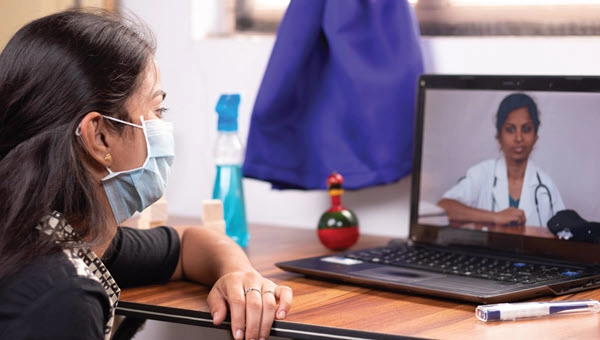Use These Strategies to Bolster Telehealth Equity
The COVID-19 pandemic has accelerated the frequency and means that telehealth is utilized, potentially saving lives and cutting transmission of COVID-19 by keeping people safe at home for certain medical visits. However, many communities that would be especially well-served by telehealth’s additional access to care may not have the necessary equipment, capabilities, education, or even infrastructure. Depending on the size of your organization, some of these realities may not be within your scope to change. However, it’s important to be aware of what your patients may be experiencing as they seek care from your practice, especially if that care is not rendered through an in-person service. Define Equity and Identify Barriers Many patients are living in situations that may mean they do not have sufficient access to healthcare. In terms of telehealth, patients may live in rural areas that cannot support a connection to the internet because of a lack of broadband. Patients may not be able to afford personal computers or camera phones, or the monthly charges associated with internet service or cellular service. Patients may not know how to use those devices or may live in housing situations from which it would be unsafe or imprudent to talk about sensitive health information. Patients may have disabilities that make effective communication in a telehealth setting tough or impossible. Patients may not speak the same language as the provider nor have household access to an interpreter or knowledge of how to conference in an interpreter when meeting virtually with a provider. Keeping these social determinants in mind can help you better manage any telehealth software you use, as well as schedule appointments with greater sensitivity and provide better access for the patient. Some of these realities also include obligations for providers under various laws and other regulations. It’s also important to focus efforts on educating staff so they are culturally competent, can create an atmosphere — including language in communication surrounding telehealth and leading up to the appointment — that is welcoming, and can provide generally responsive care in the midst of an exceedingly stressful and uncertain time. Create a Digital Needs Assessment One way to dive into the data and see how exactly your practice and patients are affected by these limiting factors is through conducting a digital needs assessment. “Digital needs assessment furthers understanding of barriers and enablers affecting telehealth use viability. This includes not only the circumstances of the populations we serve — it also includes the circumstances of care and service providers, as well as their encompassing organizations and systems,” said Jeffrey Hall, PhD, MSPH, MA, chief health equity officer for the Centers for Disease Control and Prevention (CDC’s) COVID-19 Response, in a Clinician Outreach and Communication Activity call about telehealth equity. “As just one example, inequalities in connectivity, in device access, in access to software, cybersecurity, and maintenance services and in skills and uses options all affect telehealth participation opportunities individually, as well as jointly,” Hall says. Figuring out whether patients or patient populations are dealing with one or multiple of these barriers to telehealth care is important, as you, as a provider, may be able to eliminate some obstacles. “Barrier and enabler assessments support attention not only to limits in tech access and infrastructure; they also allow description of limits in understanding of digital inequalities, as well as how they combine with other inequities and disparities to increase social vulnerability,” Hall says. Target Ways of Eliminating Disparities While your practice cannot run broadband internet to all of its patients or buy anyone a cell phone, you can choose telehealth software that allows the provider to connect with patients at the same time as interpreters. In fact, providers may have legal obligations for accessibility extending to telehealth under various laws and regulations, including the Americans with Disabilities Act (ADA). The National Association of the Deaf recommends these four options for patient-directed telehealth accommodations: The National Association of the Deaf also notes that each of these options may include limitations, such as interpreters not being able to communicate complex medical situations or delays in service — especially those inherent to relay services — that may leave gaps ripe for miscommunication. Be Creative With Outreach Some larger organizations are getting creative with the ways they provide access to patients. For example, the Veterans Administration (VA) has partnered with other organizations and corporations, like the American Legion, Veterans of Foreign Wars (VFW), and Walmart to set up private booths patients can use as portals for telehealth access through an initiative called Accessing Telehealth Through Local Area Stations (ATLAS). Another large organization, Kaiser Permanente, focuses on ways to get patients the last few steps toward care. One aspect is the use of a “workflow” so providers or staff can guide individual patients who have the equipment and access but need a little help in connecting with their providers virtually. This can be especially helpful for many elderly patients. “I do think that telehealth in general can provide access to care that can reduce health disparities,” said Edward Lee, MD, executive vice president of information technology and chief information officer at The Permanente Federation, and associate executive director at The Permanente Medical Group. While the pandemic has illuminated many inequities, it has also helped a lot of folks gain access as well. One example might be essential workers who cannot make it to an appointment but can reach a clinician synchronously on the phone or through a video platform or asynchronously through email, Lee explained.


